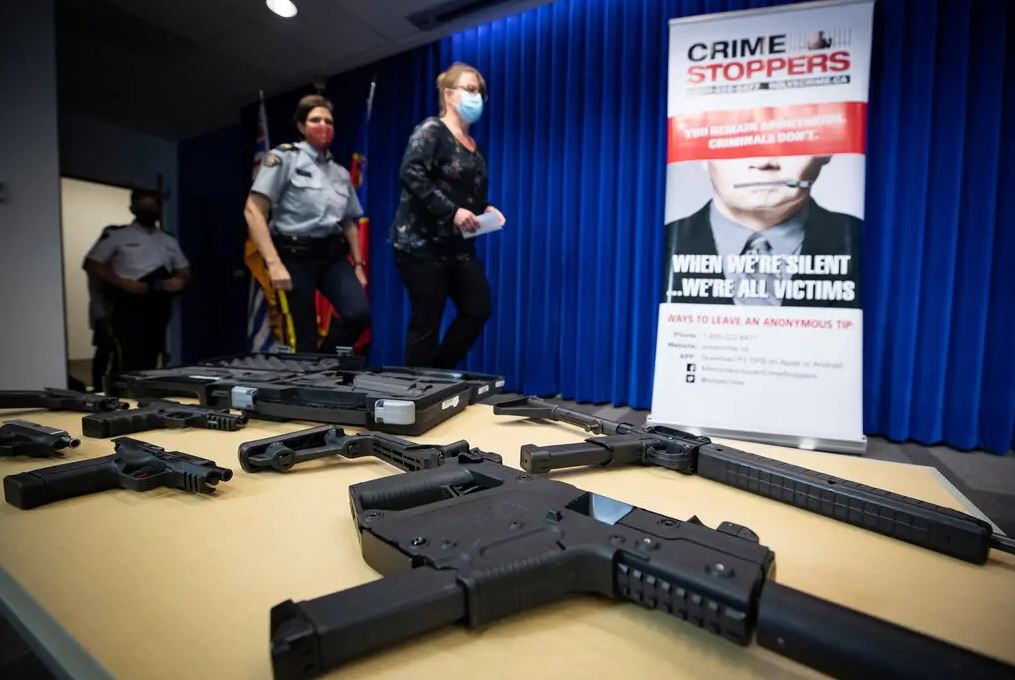According to proposed legislation that was introduced in Canada on Monday, which would tighten the country’s already stringent control of firearms, the majority of people who own firearms that are classified as “military-style assault weapons” would be required to turn their weapons over to a government buyback programme.
The government of Canada has also proposed new restrictions that would prohibit the sale of handguns as well as their purchase, importation, and transfer of ownership. The amount of handguns that may be purchased in this nation will be limited, Prime Minister Justin Trudeau said on Monday.
Since 22 people were killed in rural Nova Scotia by a gunman in 2020, in the deadliest rampage in the country’s history, Mr. Trudeau has taken a series of steps to restrict firearms, the most recent of which are the handgun sales ban and the proposed law on assault weapons. Both of these measures are the latest in a series of steps that Mr. Trudeau has taken to restrict firearms. It is anticipated that the law, which has the potential to affect tens of thousands of weapons, would be approved.
After a shooting rampage at Sandy Hook Elementary School in Newtown, Connecticut, in which 26 people were killed, including 20 children and six adults, in 2012, there were widespread calls in the United States for stricter controls on powerful firearms. However, many Republicans aligned with the gun lobby refused to even allow a vote on any proposed legislation. The limits placed on military-style semiautomatic guns in the United States that were let to expire in 2004 have not been reinstated by Congress.
A non-profit group located in Switzerland called the Small Arms Survey made an estimate in 2017 that there were 12.7 million weapons, both legal and illegal, in the hands of civilians in Canada, which equated to 34.7 firearms for every 100 persons in the country. According to their calculations, there were more over 300 million weapons in circulation in the United States, which equates to 120.5 firearms for every 100 persons.
In the immediate aftermath of the mass shooting in Nova Scotia in 2020, Prime Minister Trudeau used a cabinet order to declare that the government will prohibit more than 1,500 varieties of guns. One of these models, the AR-15, is a popular military-style semiautomatic rifle. However, in the end, it enabled owners to retain their weapons provided they had a licence to do so. However, they were no longer allowed to use them, trade them, or sell them unless it was to purchasers outside of Canada who had authorization to do so.
In Canada, citizens have been prohibited from possessing automatic weapons for a very long time, and magazines for semiautomatic weapons are regulated in such a way that no firearm may fire more than five bullets before requiring reloading.
The bill that was tabled on Monday makes good on a promise that Mr. Trudeau made one year ago to require owners of firearms designed for military use to turn them in so that they may be destroyed. The approach that Mr. Trudeau has put up will allow for some exemptions; but, in order for such weapons to remain permanently disabled, the government will need to modify them.
However, the term “military-style assault weapon” does not have a clear meaning under the law. Mr. Trudeau said that the government will work toward developing a solution that would be difficult for manufacturers of firearms to get around.
In Canada, the majority of rifles and shotguns, with the exception of automatic weapons and pistols, have been subject to regulations that are quite lax. After a young man shot and murdered 14 young ladies and wounded 13 others in 1989 at the École Polytechnique engineering school in Montreal, the previous Conservative government shut down a register for such weapons that had been established in response to the tragedy.
An earlier attempt at passing legislation by Mr. Trudeau would have given provinces the authority to outlaw the possession of all handguns within their borders. This concept almost immediately raised concerns among organisations that work to restrict the availability of firearms by raising the spectre of a patchwork system across the country. On Monday, he responded to such critiques by acknowledging them.
According to a study that was issued by Statistics Canada, the census department in Canada, the week before last, handguns are responsible for close to 60 percent of all firearms-related offences in Canada. In comparison to the United States, the death toll associated with gun violence is far lower in Canada.
Other provisions of the sweeping bill, which amends several other pieces of legislation, include making it a crime to modify a rifle in order to increase its capacity; increasing the penalties for gun smuggling; and giving police the power to seize guns from people whom a judge has determined to be at risk of hurting themselves or others. All of these provisions are included in the sweeping bill.

